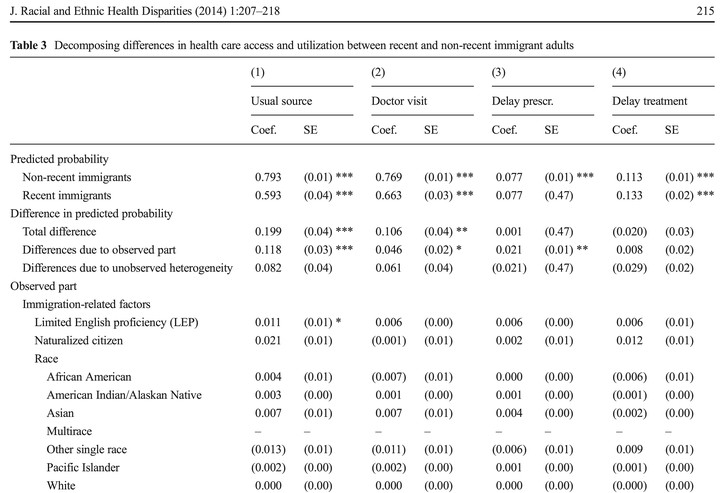
Abstract
Many studies show that immigrants face significant barriers in accessing health care. These barriers may be particularly pronounced for newer immigrants, who may face additional obstacles in navigating the health care system. Understanding the sources of health care disparities between recent and non-recent immigrants may allow for better design of policies and interventions to address the vulnerabilities unique to different subgroups of immigrants defined by their length of residency. This study employs descriptive analyses and multivariate logistic regression to estimate the likelihood of accessing and utilizing health care services based on immigration-related factors after controlling for predisposing, enabling, and health care need factors. We also employ a regression-based decomposition method to determine whether health care differences between recent and non-recent immigrants are statistically significant and to identify the primary drivers of healthcare differences between recent and non-recent immigrants. The findings support the hypothesis that significant disparities in health care access and utilization exist between recent and non-recent immigrants. We found that health care access and utilization differences between recent and non-recent immigrants were driven primarily by enabling resources, including limited English proficiency (LEP), insurance status, public assistance usage, and poverty level. These results indicate that not only are newer immigrants more likely to underutilize health care, but also that their underutilization is driven primarily by their lack of insurance, lack of adequate financial resources, and inability to navigate the health care system due to LEP. The results further indicate that immigrants with prolonged LEP may be less likely to have a usual source of care and more likely to report delays in obtaining medical treatments, than even recent immigrants with LEP.